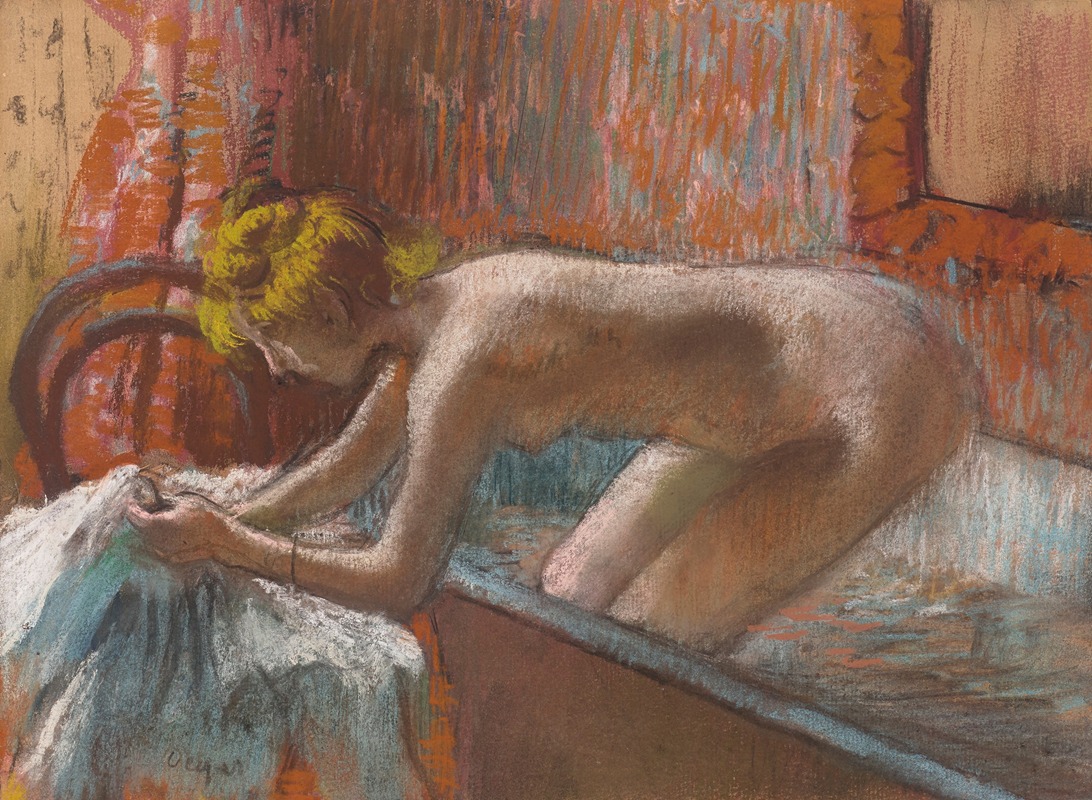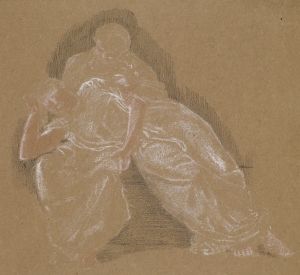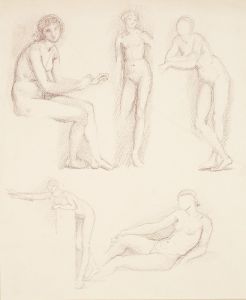
Femme sortant du bain
A hand-painted replica of Edgar Degas’s masterpiece Femme sortant du bain, meticulously crafted by professional artists to capture the true essence of the original. Each piece is created with museum-quality canvas and rare mineral pigments, carefully painted by experienced artists with delicate brushstrokes and rich, layered colors to perfectly recreate the texture of the original artwork. Unlike machine-printed reproductions, this hand-painted version brings the painting to life, infused with the artist’s emotions and skill in every stroke. Whether for personal collection or home decoration, it instantly elevates the artistic atmosphere of any space.
"Femme sortant du bain" (Woman Leaving Her Bath) is a pastel drawing by the renowned French artist Edgar Degas, created around 1886. Degas, a prominent figure in the Impressionist movement, is celebrated for his innovative approach to capturing modern life, particularly through his depictions of dancers, women, and scenes of everyday life. This particular work is part of a series of pastels and paintings by Degas that explore the theme of women in intimate, private moments, often engaged in the act of bathing or grooming.
The artwork exemplifies Degas's mastery of the pastel medium, showcasing his ability to blend colors and create texture, which adds a sense of immediacy and vibrancy to the scene. In "Femme sortant du bain," Degas employs a dynamic composition, capturing the woman in a moment of transition as she steps out of her bath. The figure is depicted with a sense of movement and fluidity, characteristic of Degas's interest in capturing the human form in motion.
Degas's approach to depicting women in these intimate settings was both innovative and controversial for his time. Unlike many of his contemporaries, who often idealized the female form, Degas chose to portray his subjects in a more naturalistic and candid manner. This approach is evident in "Femme sortant du bain," where the woman's pose and the informal setting convey a sense of realism and authenticity. The pastel medium allows Degas to explore the interplay of light and shadow on the woman's skin, enhancing the tactile quality of the work.
The composition of "Femme sortant du bain" reflects Degas's interest in Japanese prints, which were becoming increasingly popular in Europe during the late 19th century. The influence of Japonisme is apparent in the work's asymmetrical composition and the emphasis on line and form. Degas often experimented with unconventional perspectives and cropping, drawing inspiration from the flat, linear qualities of Japanese art. This influence can be seen in the way the figure is positioned within the frame, creating a sense of immediacy and intimacy.
Degas's exploration of the theme of women bathing was not merely an exercise in capturing the female form; it also reflected broader societal changes and the shifting roles of women during the late 19th century. The private, domestic setting of the bathhouse or boudoir became a space where Degas could explore themes of femininity, privacy, and the everyday life of women. His works in this series often evoke a sense of voyeurism, inviting the viewer to observe these private moments from a distance.
"Femme sortant du bain" is housed in the collection of the Musée d'Orsay in Paris, which holds one of the most extensive collections of Degas's works. The museum's collection provides insight into Degas's artistic development and his contributions to the Impressionist movement. This particular work is a testament to Degas's skill as a draftsman and his innovative use of pastel, which allowed him to capture the nuances of light, color, and form with remarkable sensitivity.
Overall, "Femme sortant du bain" is a significant example of Degas's exploration of modern life and his ability to capture the beauty and complexity of everyday moments. Through his innovative use of composition and medium, Degas offers a glimpse into the private world of his subjects, challenging traditional representations of women and redefining the boundaries of Impressionist art.


















